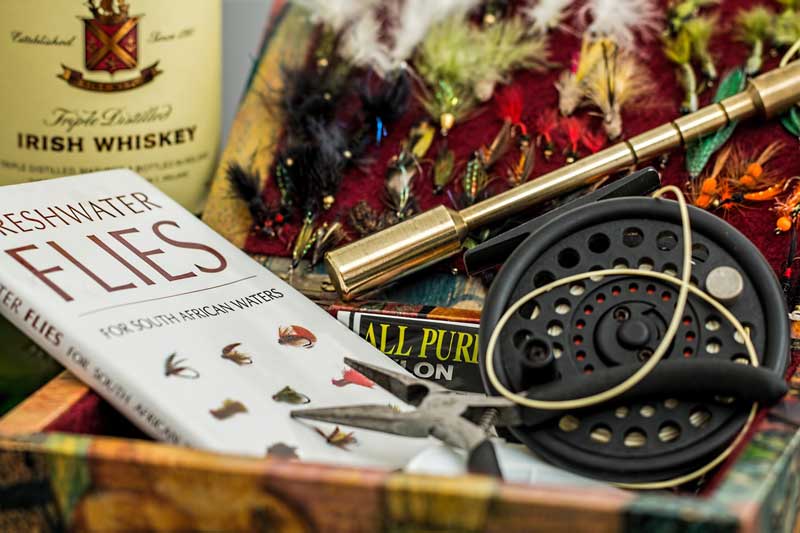When dealing with a fishing reel, the first thing to remember is that they have been designed to last but, like everything on this planet, a little bit of love and care goes a long way to ensuring you get a bit more. Maintaining your reel will allow you effective use for much longer and enhance its powers of durability.
Here, we take a look at why cleaning a reel is important; give a brief overview about reel maintenance; provide a step-by-step guide on how to clean a reel; and finally, give you some absolute ‘do not do’ rules if you want to keep your reel in top condition.
Why Should I Clean The Reel?
Fishing reels that have dirt and grit in them get damaged. Damaged reels could turn what should be a pleasant fishing trip into a bit of a nightmare experience as a key component of your rod will not be functioning the way that it has been designed to.
Whether fishing in freshwater or saltwater, you need to keep your reel clean. In both types of water, the dirt and grit can cause a problem. You definitely want to get the reel clean straight away to avoid the corrosive effects that water can bring. Saltwater will corrode those bearings and gears especially fast.
How Can I Maintain A Reel?
a) Freshwater
Following a fishing trip in freshwater, you want to rinse your reel using clean water and then allow it time to dry. Once dry, add some lubricant to the moving parts.
b) Saltwater
With saltwater fishing maintenance will be slightly different. You need to make sure you remove the salt residue.
This process can be started through the removal of the spool which will then be soaked in clean water.
Clean off any dirt with a soft cloth, and then using a low-pressure water source remove any salt and dirt that did not come off with the cloth.
Once dry, add lubricant which will help prevent corrosion that happens quickly if the reel is not well maintained despite being used in salty waters.
Step By Step Guide To Reel Cleaning
1. Preparation and Planning
a) Have a space ready before taking the reel apart. This space will be used for placing parts down on in the order that you take them apart. If needed, use some masking tape and number each piece in the order of disassembly so that there is no confusion.
b) Check if your reel came with a toolkit. If not, make sure you have a screwdriver for taking the reel apart, a pair of tweezers, a light dishcloth, something to scrub the gears, and something to apply grease.
c) Make sure you have a cleaning solution available. This can be a shop-bought specific reel cleaning solution, or a soft dishwashing liquid. Be careful not to use a cleaning solution that can cause any damage due to its strength.
d) Prepare some hot water.
1. Disassembling Your Reel
a) Have the user manual or video for your specific reel ready and follow the instructions for disassembly.
b) Place parts onto the light dishcloth in your workspace so that you can clearly see them. This will help ensure that none get lost.
c) Use tweezers for handling the smaller parts like springs, so that you do not fumble and lose them.
d) When required, remove the fishing line from the spool and secure it with masking tape.
3. Cleaning Your Reel
a) Using your reel cleaner or dish washing liquid, clean the parts. This is best done with a toothbrush or some other similar instrument.
b) Once cleaned, rinse the parts thoroughly.
c) Once rinsed, dry the parts with a clean, non-abrasive cloth.
d) Check the reel bearings and clean them using lighter fluid. Once cleaned, check that they are able to spin. If they spin this means the dirt is gone.
e) Leave the parts to dry.
4. Greasing and Oiling
a) Once everything is dry the gears must be greased, and the ball bearings oiled.
b) Using a toothpick, or something similarly small, apply a light amount of grease to the gears.
c) Again,using a toothpick, or something similar, oil the ball bearings.
5. Reassembling Your Fishing Reel
a) Allow everything to dry naturally.
b) Once dry, start with the last numbered item and work backwards to reassemble the reel according to manufacturer’s instructions.
c) Check the reel works before putting it into storage until next use.
Some ‘do Nots’ For Cleaning Fishing Reels
1. Do Not Use Salt Water
Salt water is corrosive and will limit the life of your reel. In fact, when fishing in saltwater it is all the more important to clean the reel using freshwater as soon as possible.
2. Do Not Use High Pressure Water Hoses
Not directly onto your reel at the very least. This will have the effect of forcing the dirt and grit into the gears which in turn goes on to damage the reel. A light pressure, on a downward facing reel, will ensure this does not happen.
3. Do Not Use Gasoline
Gasoline will damage the plastic in your reel. Use something softer, and preferably biodegradable.
4. Do Not Use Too Much Grease
If you use too much grease, there is a chance of it getting into the bearings and slowing everything down. You want your reel to be as fast as possible to ensure you do not get any overrun.
Final Thoughts
The best way to ensure you clean your reel right is to follow the manufacturer’s instructions on how to disassemble the parts; ensure you have taken precautions to not lose anything; and then, as carefully as possible, use our guidelines to ensure your processes are not to the detriment of the item.
If you manage this, then you will have a durable, fast reel that will serve you well for a long time.
